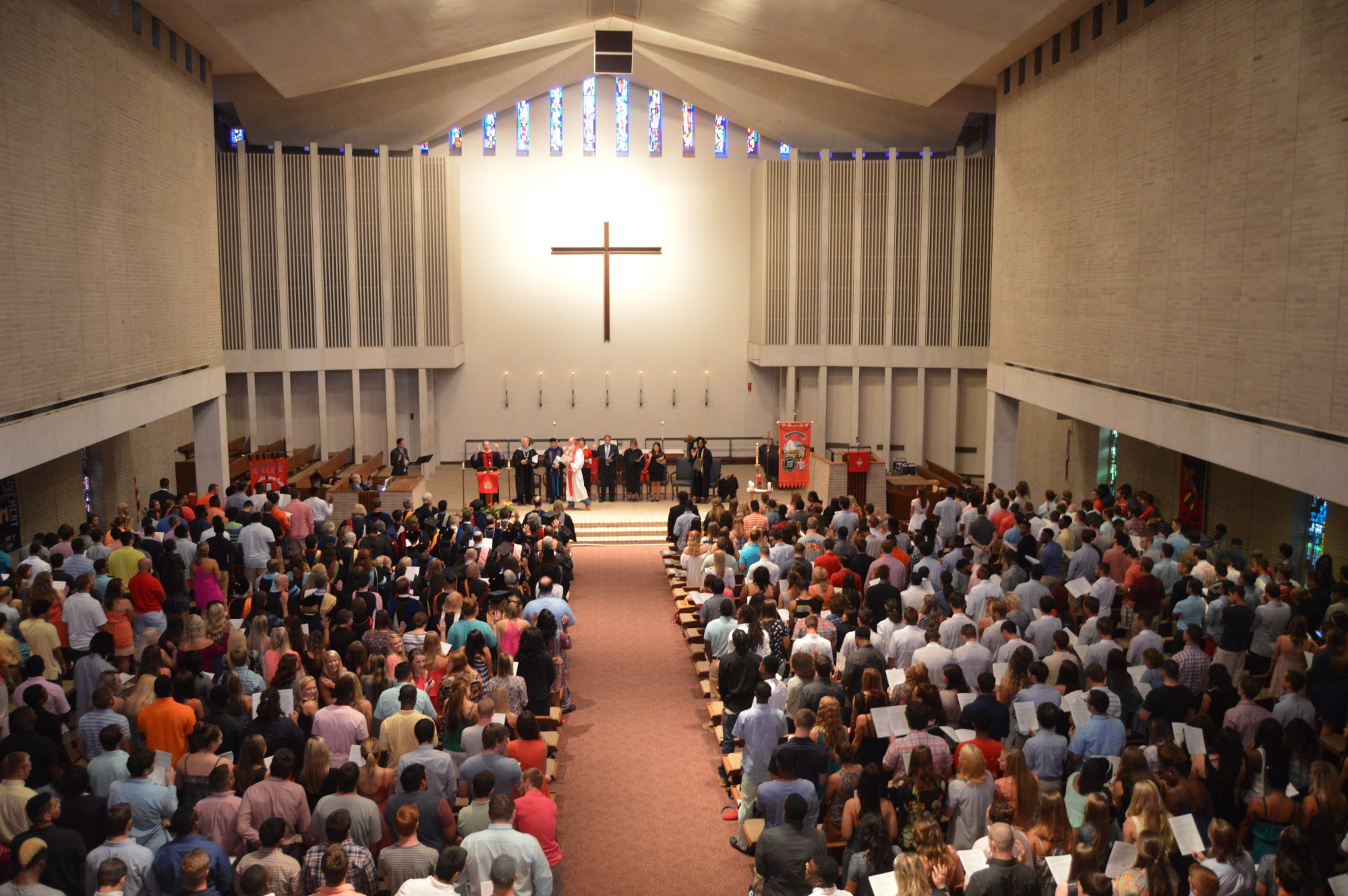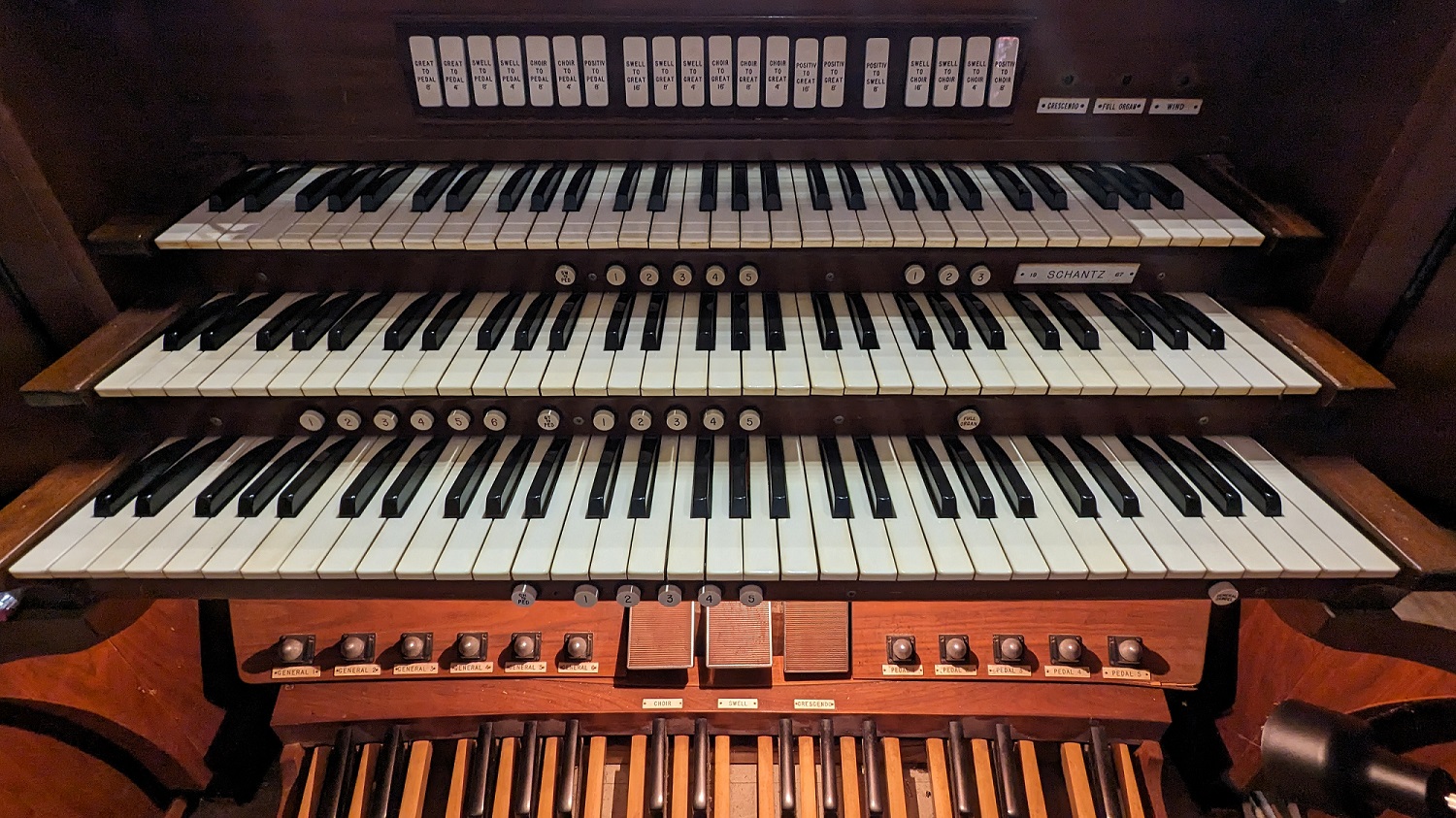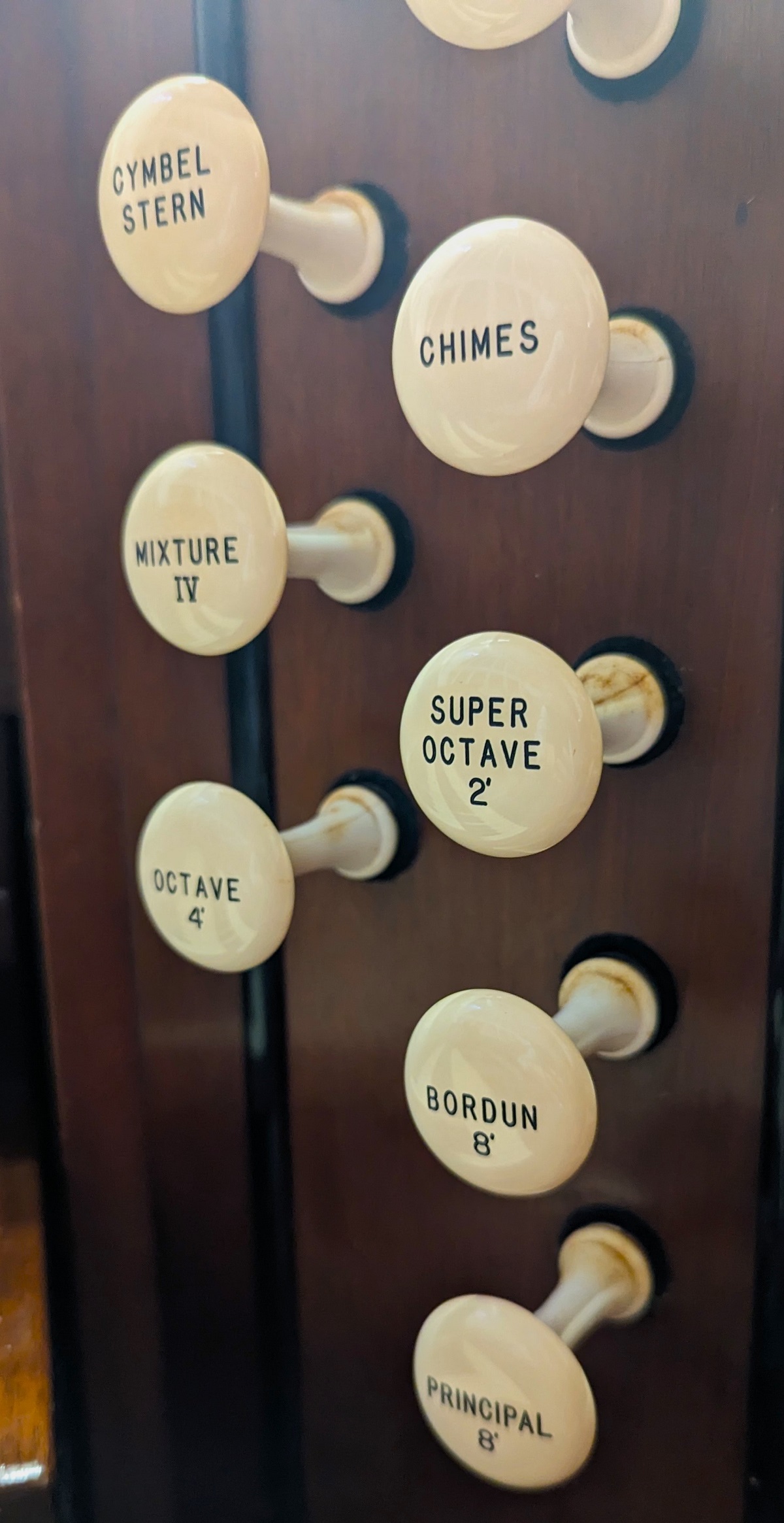College raising funds to repair Wiles Chapel organ
by Jay Salter '19 | External Communications Coordinator - April 5, 2024

NEWBERRY — The pipe organ in Newberry College’s Wiles Chapel has seen a lot — 57 years of commencements, convocations, weddings, funerals, concerts and much more. It has provided musical counsel and melodious enhancement in some of life’s grandest and most sacred moments.
After decades of faithful service and with just about all its original parts, the instrument is beginning to show its age. To restore the organ to reliability and functionality, the College is requesting support from all who may have been moved by its majestic tones.
“Music touches more than our ears. It is a part of our soul and very being,” said Campus Pastor David Coffman '97. “The right piece of music can invoke joy and heartfelt sadness. The organ is a vital part of the ongoing ministry to the Church, College and community and needs to be restored.”
Equipped with 35 ranks and 1,994 pipes, the organ was built in 1967 by the Schantz Organ Company. The $60,000 purchase price (or about $556,000 in today’s dollars) was provided by Deems Haltiwanger (1897-1997), of Columbia, a faithful supporter of the Lutheran Church in South Carolina. Constructed simultaneously with the College’s Wiles Chapel, it would not be far off to say that the chapel itself was built around the organ.
“Called the ‘King of Instruments,’ the pipe organ is a powerful instrument,” said Tony Roof '85, organist at Pisgah Lutheran Church in Lexington. “From the softest to fullest sounds, the organ can comfort us when we mourn, heighten our celebration when we rejoice, and help us lift our praises to the Lord.”
The grand instrument was designed for the space by longtime College organist and music professor Darr Wise (1929-2021), who would command its keys for the next three decades until his retirement. Today, however, due to a number of factors, the organ’s functionality has become limited. The College is raising $350,000 to not only restore playability, but also to outfit the instrument for many more decades of holy harmonies.
“Some things have to be replaced. They don’t last forever, just like any other piece of machinery. It’s man-made,” said Dr. Jonathan Hall, College organist and coordinator of music education.
 Hall said the biggest challenges to overcome stem from the organ’s console, the control center of the instrument where the organist sits. In short, in normal operation, the organist pulls stops, many of which activate ranks, or sets of pipes that share tonal characteristics and functions. These ranks belong to particular divisions of the organ, from the manuals (keyboards for the hands) or pedals (played with the feet). While the organ is turned on, air is pumped into the windchests. When a stop is pulled and a key on the corresponding division is depressed, a valve opens underneath the pipe to allow air to make contact with the pipe and produce sound.
Hall said the biggest challenges to overcome stem from the organ’s console, the control center of the instrument where the organist sits. In short, in normal operation, the organist pulls stops, many of which activate ranks, or sets of pipes that share tonal characteristics and functions. These ranks belong to particular divisions of the organ, from the manuals (keyboards for the hands) or pedals (played with the feet). While the organ is turned on, air is pumped into the windchests. When a stop is pulled and a key on the corresponding division is depressed, a valve opens underneath the pipe to allow air to make contact with the pipe and produce sound.
In its present condition, the connection is not as stable between the console and the rest of the instrument, for various reasons. The windchests, which generate air for the organ’s sound, are wearing thin and need new leather. On the console, one of the three manuals does not produce sound at all. Due to aging among air-directing components, twenty-five of the organ’s 35 ranks are not complete.
“If you think about each of these [ranks] being an orchestral instrument, right now we're missing 25 instruments of the 35 that we have,” said Hall. “When something goes wrong with the pipes, like we have a cipher or something where it would just continuously play, then it's common practice to remove that pipe temporarily. So, if you were to play a melody, you would be missing notes.”
In addition to restoring some elements of functionality, part of the renovation will include updates to allow the organ to meet present-day demands. This includes digitizing the console, which currently communicates with the rest of the organ via air dash driven components. Further, the organ’s memory system, which allows combinations of stops to be programmed to switch easily on demand, includes only six available presets.
 “Any service you play, this gives you six different options of presets. Organs today will have typically a minimum of 10 pages worth, typically about six to 10 memories, so we’re very limited if someone were to come play a recital. They would have to stop and program or pull the stops in time, which is very difficult and sometimes impossible to do, depending on the piece you’re working on,” said Hall.
“Any service you play, this gives you six different options of presets. Organs today will have typically a minimum of 10 pages worth, typically about six to 10 memories, so we’re very limited if someone were to come play a recital. They would have to stop and program or pull the stops in time, which is very difficult and sometimes impossible to do, depending on the piece you’re working on,” said Hall.
The renovation would also include moving the console from the pit, in which it currently resides, to a mobile cart. This would create new space on the chapel’s stage, make the console more accessible to organists, and allow it to be moved depending on the occasion. With this refurbishment, the original ivory keys will be kept and built back into the console.
“All organs get updated throughout the years. That’s not unusual. We’re not asking to build a brand new console or start from scratch or get all new pipes. It’s just making this current and where it’s playable,” said Hall.
The fundraising goal will include $300,000 for the necessary repairs and upgrades, with $50,000 for an endowment to help with future maintenance costs.
“The Schantz pipe organ in Wiles Chapel has provided a majestic musical witness to our Lutheran heritage for the past 57 years,” said Dr. Huger Caughman '00, organist at the Lutheran Church of the Redeemer in Newberry. “The organ restoration project will ensure its continued splendor and glory as we continue to serve the church and posterity.”
To give, visit newberry.edu/give and enter “Wiles Chapel Organ” in the designation box, or make your check payable to Newberry College, 2100 College St., Newberry, SC 29108, with “Wiles Chapel Organ” on the memo line. To learn more, contact Campus Pastor David Coffman at 803-947-2052 or David.Coffman@newberry.edu.


 Close
Close